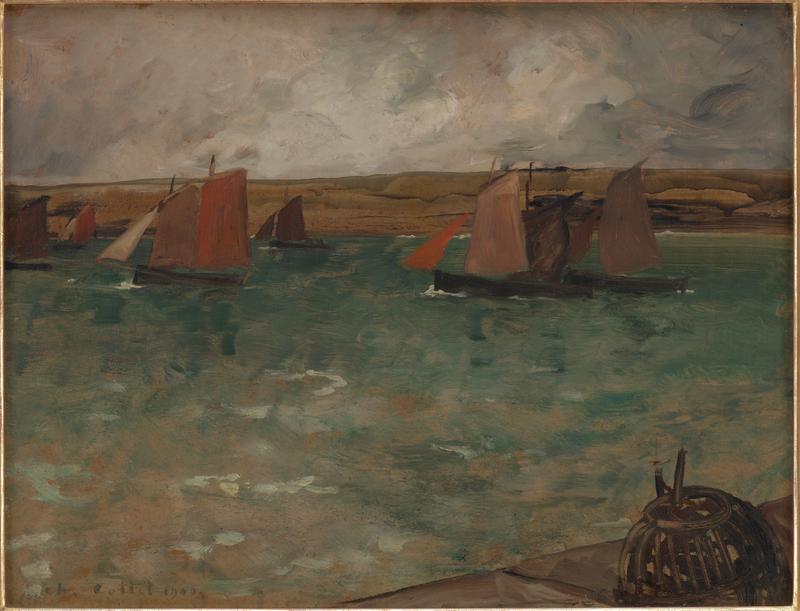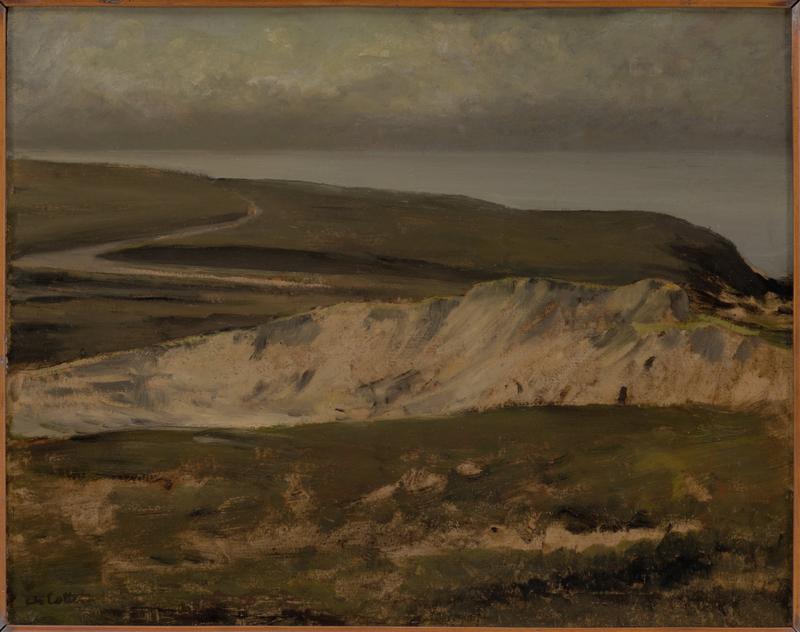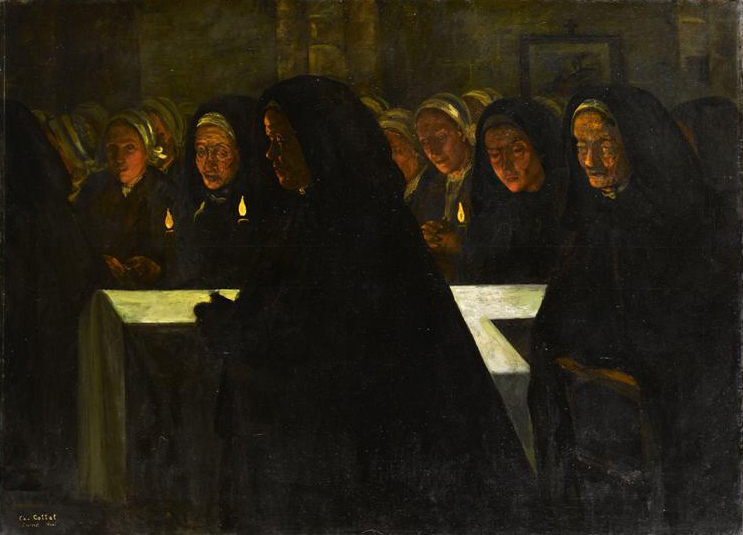

58–59. Charles Cottet, Boats in the Port of Camaret and Brittany Landscape
| Artist | Charles Cottet, French, Le Puy, Haute-Loire 1863–Paris 1925 |
| Title, Date | Boats in the Port of Camaret (Les barques dans le port de Camaret), 1900 |
| Medium | Oil on cardboard |
| Dimensions | 17 11/16 × 23 1/4 in. (45 × 59 cm) |
| Inscriptions + Marks | Lower left: Ch. Cottet 1900 |
| Provenance | [Paul Bennazar, Antiquités-Tableaux, Marché Serpette, Saint Ouen, until 2011; to Weisberg]; Yvonne and Gabriel Weisberg, Minneapolis |
| Exhibition History | Salon of the Société des Artistes Lyonnais, Palais Municipal, Lyon, France, January 13–March 13, 1906; "Reflections on Reality: Drawings and Paintings from the Weisberg Collection," Mia, 2022–23 |
| Credit Line | Promised gift of Gabriel P. and Yvonne M.L. Weisberg, Minneapolis |
| Artist | Charles Cottet, French, Le Puy, Haute-Loire 1863–Paris 1925 |
| Title, Date | Brittany Landscape (Paysage de Bretagne), not dated |
| Medium | Oil on cardboard |
| Dimensions | 17 1/4 × 21 1/4 in. (43.8 × 54 cm) |
| Inscriptions + Marks | Lower left: Ch. Cottet |
| Provenance | [Galerie Normand, Paris, until 2011; to Weisberg]; Yvonne and Gabriel Weisberg, Minneapolis |
| Exhibition History | "Reflections on Reality: Drawings and Paintings from the Weisberg Collection," Mia, 2022–23 |
| Credit Line | Promised gift of Gabriel P. and Yvonne M.L. Weisberg in celebration of the 100th anniversary of the Minneapolis Institute of Arts |
Among the painters who gravitated to Brittany in western France in the late nineteenth century, Charles Cottet was one of the most prominent. His paintings, which often feature local fisherfolk and the waters they worked, were widely appreciated by private collectors and Salon juries.
Today Cottet is considered the leader of the Bande Noire, or Black Band, a loosely affiliated group of painters, popular in the 1890s, who focused on the Breton peninsula. Bande Noire artists fused impressionist and realist ideas. They used open brushwork but eliminated brilliant colors from their palette, preferring dark, muted tones. The group acquired its sobriquet when Cottet displayed a burial scene, Breton Internment (fig. 1), at the Paris Salon of 1894. Black band refers to the mourning ritual of wearing a black band on one’s arm and to the somber aspect of the group’s work.1

In these two landscape studies, dark clouds are used to produce a foreboding atmosphere that seems to mirror the lives of local inhabitants. With its bleak coastal dunes, the powerful Brittany Landscape creates an impression of loneliness and desolation, qualities often visible in Cottet’s treatment of the Breton people.
Regarding Boats in the Port of Camaret, we know that Cottet found lodging in this port town of about 2,000 near the western tip of Brittany. The harbor activity proved so inspirational that he completed a large series of works on the subject, most with a muted tonality. Camaret is also the location Cottet inscribed on his painting Breton Internment.
GPW
Notes
Within the Bande Noire, Lucien Simon and André Dauchez were Cottet’s closest associates. For more details on the group, see Grove Art Online: https://doi.org/10.1093/gao/9781884446054.article.T006091 ↩︎